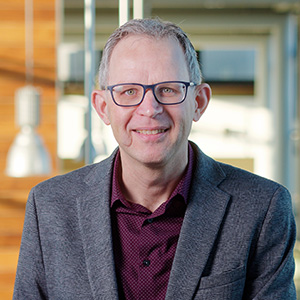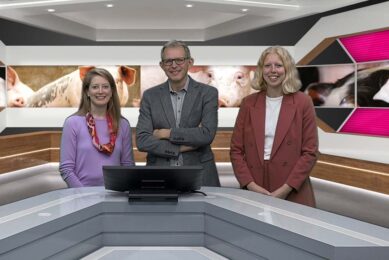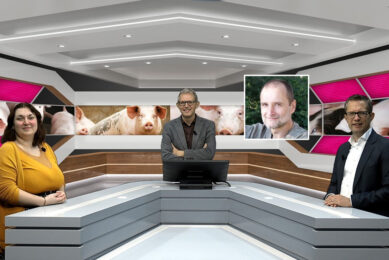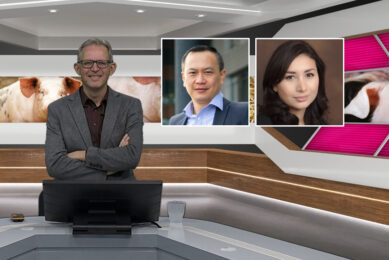On-demand: Webinar on Advanced Pig Farming

In which ways can data help make pig farming better? Can we do pig farming in the cloud? And what are benefits of high-tech precision feeding? Just some questions that were answered in the 1st of 4 Pig Progress webinars held during the International Webinar Week. The webinar ‘Advanced Pig Farming’ is now ready to view on demand.
With pig farmers now working in a new era of technology, it is interesting to see how the digital revolution can help make their businesses more efficient with smartphones, drones and sensors.
Click here to get direct access to the webinar
How technology can make pig farming more efficient
First up on November 16 was Aidan Connolly, president of AgriTech Capital, who discussed the topic ‘Imagining a Digital Future for Precision Pork Production’. Connolly said that whilst pork is the most consumed meat in the world, the industry faces a number of environmental challenges in the future with diseases at the top of the list. In order to meet these challenges, Connolly highlighted how technology could make pig farming more efficient. “We need to be able to identify body weights real time using cameras. We also need to be able to monitor stress levels, spot diseases and increase yield.”
Connolly said technology include hardware and software and are connected by the Internet of Things. Robotic technology certainly plays a key role in pig production to aid with labour on farm and in the processing plants.
Some examples Connolly mentioned include Kuka in meat processing; Pellon Group pig robot for efficient feeding and SkaldTek for housing improvements. Concluding, Connolly advised farmers who consider investing in new technology to compare the costs and the benefits and to research how long the technology will last.
Precision feeding technology for pigs
The next speaker was Amanda Uitermarkt from Gestal/Jyga Technologies who discussed precision feeding for pigs. Amanda highlighted the amount of data farmers can collate and how her company uses this in technology for gestation, lactation and grow to finish stages.
For gestation, Uitermarkt said it was important to cater to the needs of the individual pig and to ensure pigs were not over-conditioned leaving the gestation period. Using technology, she said, can control this. Lactation feeding technology can control feed blending to formulate nutrient intake, therefore increasing efficiency.
Uitermarkt did highlight that farmers should calibrate their feeders once per month, especially when changing diets or types of feed.
Digital solution to advancing pig production
Lastly, Jens Toppenberg, founder of Cloudfarms, looked at digital solutions to advancing pig production. His company developed IT solutions for full line pig production and is now operating in 37 countries worldwide. He said: “We are trying to use modern technologies like sensor integration, to leverage all the different data on the farm to be able to give the farmer the right platform to make their decisions.”
Toppenberg outlined a number of situations where his applications are used including electronic scanning of pigs using mobile phones and obtaining day reports that monitor different stages in the production line. Using Cloudfarms technology allows a farmer to track a pig all the way from birth to slaughter and identify details like medications administered
 Beheer
Beheer








 WP Admin
WP Admin  Bewerk bericht
Bewerk bericht